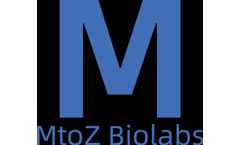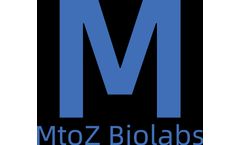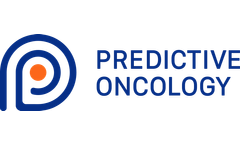Clinic Celiacshield Trial Articles & Analysis: Older
285 articles found
Pharmacokinetics (PK) and pharmacodynamics (PD) are two fundamental pillars in the field of pharmacology and drug development. Understanding their intricate interplay is essential for determining the efficacy and safety of therapeutic compounds. When studied in living organisms, this relationship is referred to as in vivo PK/PD, a discipline that provides invaluable insights into drug behavior ...
The world of drug development has long been marked by the rigorous assessment of cardiac safety. Recognizing the need for a more accurate and efficient evaluation system, the Comprehensive in vitro Proarrhythmia Assay (CiPA) initiative emerged. At the heart of this initiative are CiPA Translational Assays, designed to improve the prediction of drug-induced cardiac arrhythmias. Understanding the ...
As we step into 2024, the global health landscape is increasingly focused on combatting viral infections, which continue to pose significant threats to public health. The COVID-19 pandemic has illuminated the critical need for innovative strategies in antiviral research, and scientists worldwide are embarking on groundbreaking projects to develop more effective therapies, vaccines, and preventive ...
MicroRNAs (miRNAs) are small, non-coding RNA molecules that play a crucial role in the regulation of gene expression. Their ability to modulate various biological processes makes them significant players in the field of molecular biology and medicine. Among the various tools utilized in research and therapeutic applications, miRNA mimics have emerged as powerful instruments for manipulating and ...
Cytokines are a diverse group of small protein molecules that play crucial roles in the immune system and various biological processes. They are synthesized and secreted by a range of immune cells, including monocytes, macrophages, T cells, B cells, and natural killer (NK) cells, as well as certain non-immune cells like endothelial cells, epidermal cells, and fibroblasts. Cytokines are produced ...
In recent years, adeno-associated virus (AAV) particles have emerged as a pivotal tool in the realm of gene therapy, offering researchers and clinicians innovative approaches to treat a variety of genetic disorders. Premade AAV particles represent a significant advancement in this field, streamlining the process of gene delivery and significantly enhancing the efficiency and efficacy of ...
Human umbilical cord cells, particularly those found in Wharton’s jelly, have emerged as a focal point in regenerative medicine and cellular therapy. Wharton’s jelly is a gelatinous substance that surrounds the umbilical cord’s blood vessels, providing structural support and protection. It is rich in mesenchymal stem cells (MSCs), which are known for their unique regenerative ...
The scientific realm of biomedicine has witnessed extraordinary evolution in recent years, particularly in the spheres of cell and gene therapies. These therapies have radically revamped disease treatment modalities, transcending traditional approaches to become some of the most groundbreaking advancements in modern healthcare. This article aims to engage in an incisive analysis of cell and gene ...
Clinical trials are the backbone of modern medicine, responsible for bringing innovative, safe, and efficient treatments to market after rigorous testing and evaluation. However, the conventional process of conducting these trials has often been long, expensive, and fraught with inefficiencies¹. The advent of predictive analytics is reshaping the landscape of clinical trials, ushering in a ...
Medical advancement relies on clinical trials, which are essential for the development of safe and effective innovative treatments. However, the success and general applicability of these treatments heavily depend on the diversity of the participants involved¹?³. This blog explores the importance of achieving data diversity in clinical trials to enhance clinical trial results and ...
In recent years, the field of biotechnology has seen groundbreaking advancements, with the integration of artificial intelligence (AI) into gene editing and therapy. AI-driven technologies have transformed the way we approach genetic modification and treatment, offering unprecedented opportunities for precision medicine and therapeutic interventions. One of the most significant applications of ...
Cancer is a daunting diagnosis; however, the rapid advancements in oncology are continuously perfecting patient outcomes and quality of life. Among the groundbreaking developments, cancer vaccines are a promising frontier1. These vaccines are transforming how we approach cancer treatment, leveraging the body's immune system to fight malignancies more effectively. To grasp how cancer vaccines ...
Antibody-drug conjugates (ADCs) are a new class of drugs that combine the advantages of both antibodies and small molecule toxins. Compared with traditional cytotoxins, ADCs have the advantages of strong targeting, less toxic side effects, etc. They can accurately target tumor cells, reduce side effects, and improve the therapeutic effect.ADC drugs are mainly composed of monoclonal antibodies, ...
Antibodies are an essential part of our immune system, capable of recognizing foreign molecules (antigens) and helping to eliminate them. Antibodies have a high degree of target specificity, affinity, and safety, and have been widely used in the treatment, diagnosis, and prevention of many major diseases. They are currently a focus in new drug development. The design of antibody drugs is a ...
We recently spoke with Manuela Badiali, Rita Congiu, and Stefania Murru from the Laboratory of Genetics and Genomics, Microcitemico Pediatric Hospital – A. Cao, Cagliari, about how SOPHiA DDM™ RNAtarget Technology has helped them optimize their variant analysis workflow. ...
Dr. Kate Sasser from Tempus led a discussion on the potential of antibody-drug conjugates (ADCs), their challenges in targeting tumor antigens, and the future of cancer treatment with Dr. Daniel Johnson, Dr. Funda Meric-Bernstam, and Dr. Kellogg Parsons. The oncology field is rapidly advancing with the development of antibody-drug conjugates (ADCs), offering new hope for ...
ByTempus
Oncology drug development makes up almost half of the annual R&D expenditure of biopharmaceutical companies. Only 10% of drugs advanced to the clinical stage are successfully brought to market, with half of all failures attributed to lack of clinical efficacy. This means that approximately $60 billion dollars are spent annually on unsuccessful drugs.1,2 Contributing to these unchecked costs ...
Understanding Sleep Apnea and Its Types Sleep apnea is a sleep-related breathing disorder that results in poor sleep quality and can lead to daytime fatigue or sleepiness, forgetfulness, and irritability. According to the Mayo Clinic, there are 3 types of sleep apnea to be aware of as follows: OSA or obstructive sleep apnea is the more common form of the disorder and affects roughly 30% of ...
In recent years, mRNA vaccines have emerged as a revolutionary tool in the fight against infectious diseases, including the ongoing COVID-19 pandemic. These vaccines utilize messenger RNA (mRNA) to instruct cells to produce a protein that triggers an immune response, leading to the production of antibodies that protect against the targeted virus. While mRNA vaccines have shown remarkable efficacy ...
In recent years, the field of biotechnology has seen groundbreaking advancements, with the integration of artificial intelligence (AI) into gene editing and therapy. AI-driven technologies have transformed the way we approach genetic modification and treatment, offering unprecedented opportunities for precision medicine and therapeutic interventions. One of the most significant applications of ...











